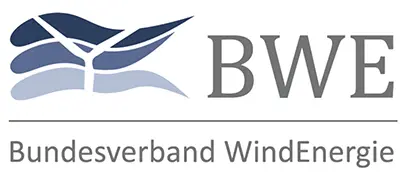How safe are aircraft detection lighting systems (ADLS) for wind power stations?
A focus on the type test institute, hazard analysis and risk assessment
Contents
I. What are aircraft detection lighting systems used for?
Understanding the general function of ADL systems
II. How safe are aircraft detection lighting systems
The 3 pillars of ADLS safety
III. Safety factor 1: The type test institute
The prerequisite for each wind power station
III.I. What is a type test institute?
A short overview of its general function
III.II. The role of the type test institute regarding ADL systems
How does the test institute ensure safety?
III.III. The certification process for ADL systems
An overview of the steps to certification
III.IV. The importance of the type test institute for ADLS safety
Why an independent test institute is important
IV. Hazard analysis for aircraft detection lighting systems
What hazards can arise during the operation of ADL systems?
IV.I. Why is a hazard analysis necessary?
Identifying potential risks
IV.II. The kinds of hazards related to ADL systems
What hazards are there?
IV.III. Methods of identifying hazards
How are hazards identified?
IV.IV. Examples of possible hazard scenarios
An overview of the most frequent hazards
V. Risk assessment for aircraft detection lighting systems
What dangers are the most probable to arise?
V.I. Why is risk assessment important?
The basics for the assessment of safety
V.II. Risk assessment steps for aircraft detection lighting systems
How do experts reach their assessment?
V.III. Risk minimisation measures
Active promotion of safety
V.IV. Continuous monitoring and adjustment
Regular verification and reassessment of the risks
VI. The safety of transponder-based ADL systems
Identifying and preventing specific dangers
VI.I. Operating principle of transponder-based ADL systems
What makes this ADL system special?
VI.II. Safety aspects of transponder-based ADL systems
Consideration of the particularities typical of the systems
VI.III. Safety measures for transponder-based ADL systems
Necessary measures to ensure safety
VI.IV. Transponder-based ADLS and data protection
The provisions relating to personal rights must be complied with
Reference to sources and resources for more information
Aircraft detection lighting systems (ADLS) are considered a key subject in the wind energy industry, which not only concerns operators of wind power stations but also the people living near these stations. In this section, we are going to deal in detail with the safety of ADL systems. For this purpose, we will have a look at the type test institute, hazard analysis and risk assessment in order to provide in-depth understanding of the safety of ADL systems.

1. What are aircraft detection lighting systems used for?
Aircraft detection lighting systems (ADLS) are used to make high obstructions conspicuous for air traffic at night and thus to ensure the safety of air traffic. Wind power stations, transmitter masts or buildings are therefore equipped with special lighting systems allowing efficient operation. This also includes, of course, keeping danger for animals and light pollution nuisance for residents at the lowest possible level. In order to ensure this, modern aircraft detection lighting systems are only activated when they are needed. The mechanism is transponder-based, i.e. based on the complex interaction of the ADL systems with their environment. It goes without saying that this may raise safety concerns, but these can be excluded to the greatest possible extent. The following overview serves as a starting point providing a detailed insight into the complex aspects of the safety of ADL systems and to demonstrate their relevance for operators and residents.


2. How safe are aircraft detection lighting systems?
The safety of ADL systems is of great importance and it is supported by various pillars which play a decisive part in this connection. For this purpose, we are going to look especially at the parts the type test institute, hazard analysis and risk assessment play in this complex and challenging area of aviation. These elements ensure that the ADL systems meet the highest safety standards and that the risks for air traffic are minimised.
3. The type test institute for aircraft detection lighting systems
The type test institute for aircraft detection lighting systems (ADLS) plays an essential part when it comes to ensuring the safety and quality of ADL systems. In this section, we are going to deal in detail with what a type test institute is, what functions it fulfils and how it contributes to the safety of ADL systems.
3.1 What is a type test institute?
A type test institute is an independent organisation specialising in the testing, certification and quality assurance of technical products and systems. It is responsible for ensuring the conformity of products with specific standards and regulations. As regards aircraft detection lighting systems, it is an acknowledged institute specialising in the testing of aircraft detection lighting systems and their components.
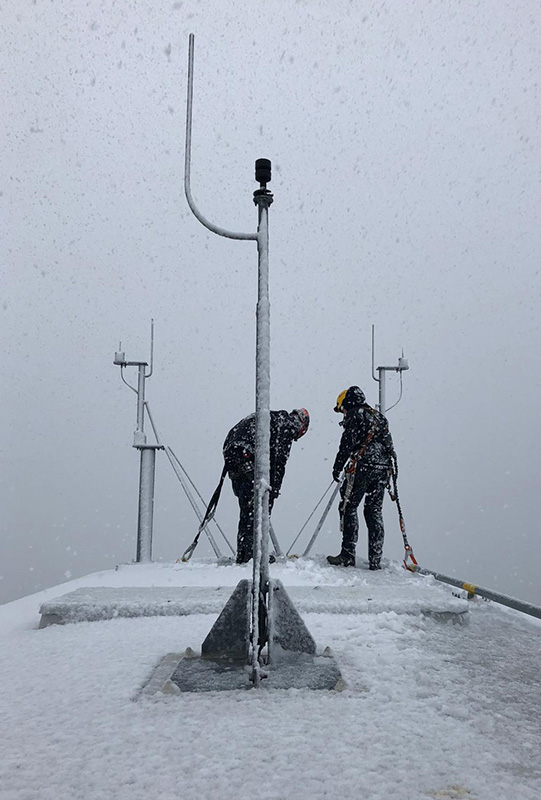
3.2 The role of the type test institute regarding ADL systems
The type test institute undertakes various tasks in order to ensure the safety of aircraft detection lighting systems:
Certification of ADL systems: One of the main tasks of a type test institute consists of checking the conformity of ADL systems with the applicable regulations and standards and to certify the systems. This ensures that the ADL systems meet the relevant safety standards.
Testing of components: Besides certifying entire systems, the institute also tests the individual components used in ADL systems as to their safety and quality. This comprises, for example, testing lamps, sensors and control units.
Monitoring and inspection: Type test institutes perform regular inspections and monitoring of ADL systems in order to ensure that these keep meeting the standards. This helps to detect potential safety issues at an early stage.
Research and development: Some type test institutes actively participate in the research and development of ADLS technologies. They contribute to driving innovations forward and to developing new solutions for the improvement of safety.
3.3 The certification process for ADL systems
Before an ADL system is certified, it has to undergo a complex and thorough process that is carried out by the type test institute. Here are the individual steps that have to be completed before an aircraft detection lighting system can be put into service:
Application: The manufacturer or operator of an ADL system files an application with the type test institute. This application provides all the relevant information about the system and its components.
Verification of documents: The type test institute verifies the documents filed in order to ensure that they are complete and correct. This comprises technical specifications, test reports and other relevant documents.
Physical test: The test institute performs physical tests with the ADL systems and their components. These tests include checking whether the system and its components are resistant to the environmental conditions, function properly and are safe.
Documentation of the results: The type test institute documents the results of the tests and prepares a report about the conformity of the ADL system with the applicable standards.
Certification: The ADL system is not certified until it has passed all the tests and has been found to meet the standards. Its certification confirms that the system is safe and complies with the applicable regulations.


3.4 The importance of the type test institute for ADLS safety
The existence and the work of type test institutes are essential for the safety of ADL systems for the following reasons:
Quality control test: The independent testing and certification ensure that ADL systems and their components meet the highest quality standards.
Safety: Potential risks and problems are identified and eliminated at an early stage through the verification of the safety aspects.
Trust: Certification by an acknowledged type test institute creates trust with operators, residents and other stakeholders.
Compliance with regulations: The tests and certification are essential to ensure compliance with statutory provisions and regulatory requirements.
All in all, the type test institute plays a major part in ensuring the safety of ADL systems and the prevention of risks for operators and residents. The accurate and independent testing of ADL systems is an important step that ensures that the technology used for aircraft detection lighting systems can be operated safely and reliably.
4. Hazard analysis for aircraft detection lighting systems
Hazard analysis is a decisive step for ensuring the safety of aircraft detection lighting systems (ADLS). In this section, we are going to deal with the various aspects of hazard analysis as regards ADLS to show how potential risks can be identified and minimised.

4.1 Why is a hazard analysis necessary?
The hazard analysis contributes to the identification of potential hazards and risks of ADL systems. These risks can refer to various aspects including the safety of aircraft, the impact on the environment and interaction with residents. An in-depth hazard analysis is necessary in order to develop proactive measures that minimise the risk.
4.2 The kinds of hazards related to ADL systems
The hazard analysis of ADL systems identifies various kinds of hazards that have to be taken into consideration:
Collision hazard: One of the most obvious hazards related to aircraft detection lighting systems is the risk of aircraft colliding with obstructions such as wind power stations. The hazard analysis examines how ADL systems can contribute to minimising such hazards.
Bird impact: Another major risk is bird impact, i.e. birds colliding with the rotor blades of wind power stations. The hazard analysis evaluates how ADL systems can help to prevent bird impact.
Dazzling and annoyance: ADL systems can be perceived as dazzling and annoying by residents. The analysis considers how these effects can be reduced.
Malfunctions of the ADLS technology: Technical malfunctions of ADL systems can also pose risks. The hazard analysis verifies how the probability of such malfunctions can be minimised.
4.3 Methods of identifying hazards
Various methods and analyses are used to identify hazards related to the aircraft detection lighting systems of wind power stations:
Safety audit: An extensive audit evaluates all aspects of the ADL system in order to detect potential risks.
Historical data: The analysis of historical data about accidents and incidents in connection with ADLS can provide an indication of potential hazards.
Simulation and modelling: The use of simulation software and modelling techniques allows the visualisation and analysis of potential scenarios in order to identify hazards.

4.4 Examples of possible hazard scenarios
In order to demonstrate the importance of the hazard analysis, we have compiled some examples of possible hazard scenarios related to aircraft detection lighting systems.
Scenario 1 – Bird impact
The hazard analysis helps to prevent bird impact by minimising the activation of the lighting at times during which birds are particularly active.
Scenario 2 – Collision with obstructions
Through identification of critical spots, ADL systems can be configured so that they detect obstructions in due to time and divert aircraft.
Scenario 3 – Nuisance for residents
The hazard analysis helps to minimise the impact of ADL systems on residents’ quality of life, e.g. through the adjustment of lighting patterns.
5. Risk assessment for aircraft detection lighting systems
Risk assessment is important to understand the likelihood and impact of hazards and risks associated with ADLS. It enables operators, authorities and other stakeholders to make informed decisions about the safety of ADLS.
5.1 Why is risk assessment important?
The risk assessment of aircraft detection lighting systems (ADLS) analyses and evaluates potential risks in connection with ADL systems. While the hazard analysis focuses on the kind of hazardous situations, the risk analysis considers the probability of such risks actually occurring.
5.2 Risk assessment steps for aircraft detection lighting systems
The risk assessment of ADL systems usually comprises the following steps:
Identification of hazards: At first, potential hazards and risks are identified that are related to ADLS. This may be based on historical data, experience and expert knowledge. (See also hazard analysis.)
Evaluation of the probability: It is evaluated how likely the hazards identified are to occur.
Evaluation of the impact: The impact of the hazards on people, the environment and material assets is figured out.
Risk assessment: The overall risk is assessed and prioritised by the combination of probability and impact.
5.3 Risk minimisation measures
Risk minimisation measures are developed and implemented based on the results of the risk assessment. These include, for example, technical adjustments, training courses, improved communication or other steps taken in order to reduce the risk to an acceptable level.
5.4 Continuous monitoring and adjustment
Risk assessment is not a one-time process. It should be verified and updated on a regular basis. This is the only way to ensure effective safety measures and take variable conditions into account.
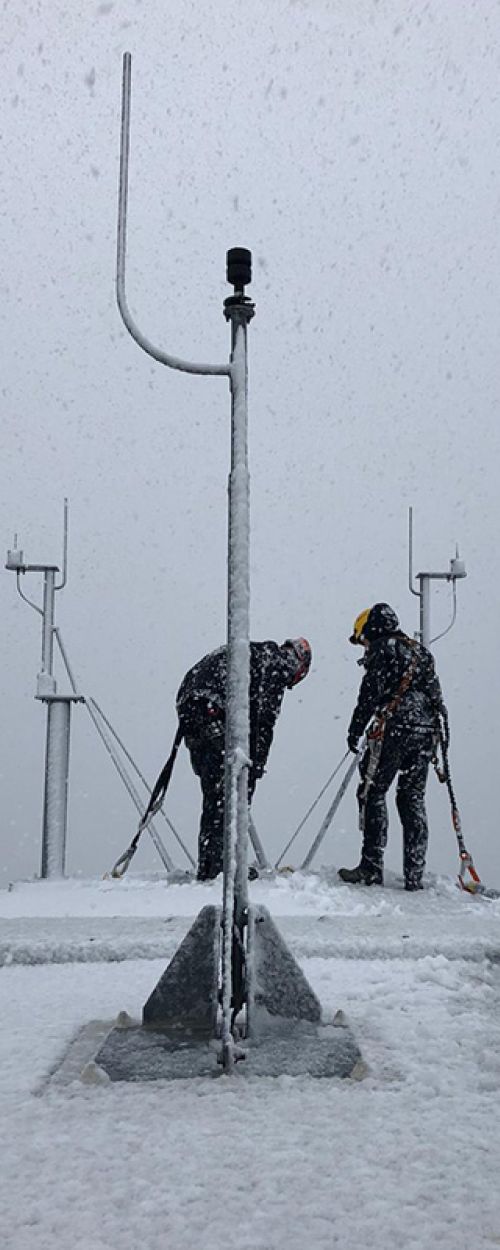
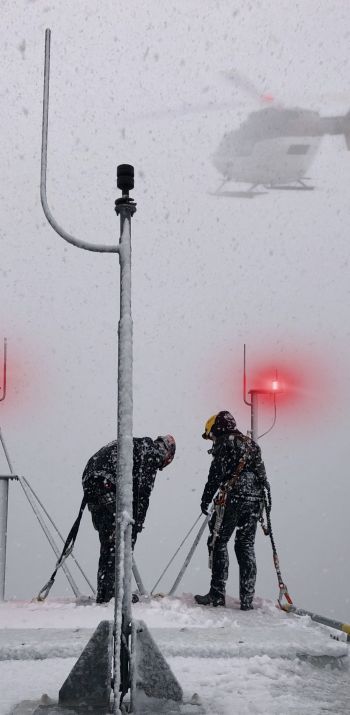
6. The safety of transponder-based ADL systems
Transponder-based ADL systems are a special form of aircraft detection lighting systems that are based on transponders and radio communication. In this section, we want to deal in more detail with the safety aspects of transponder-based ADL systems.
6.1. Operating principle of transponder-based ADL systems
Transponder-based ADL systems use radio communication between aircraft and stations in order to control the lighting of the stations. The systems detect approaching aircraft via transponder data and adjust the lighting accordingly to avoid collision and blinding.
6.2 Safety aspects of transponder-based ADL systems
Safety has absolute priority in transponder-based ADL systems as well. Here are some key aspects:
Reliability of the transponders: The transponders have to work reliably in order to be detected by the ADL systems. Careful maintenance and regular inspection of the transponders are a must.
Radio communication: Aircraft and ADL systems communicate with each other via the radio. This requires a stable and trouble-free communication in order to ensure in-time activation of the lighting system.
Malfunctions and disturbances: ADL systems can be affected by malfunctions just like any other technical systems. What matters is to implement measures aimed at detecting and eliminating disturbances.
6.3 Safety measures for transponder-based ADL systems
Regular maintenance: The transponders have to be maintained and inspected in compliance with the manufacturer’s instructions.
Redundancy and fault tolerance: The implementation of redundant and fault tolerant units in the ADL systems can ensure that safety is maintained even in the event of a failure or disturbance.
Monitoring and tests: Continuous monitoring and tests of the radiocommunication system and transponder-based detection are decisive for identifying malfunctions at an early stage.
6.4. Transponder-based ADLS and data protection
Data protection is another important aspect of transponder-based ADL systems. Communication between aircraft and wind power stations is effected via data that have to protect the privacy of the pilots and the airlines. Data protection regulations and safety measures are imperative in order to ensure that sensitive information is properly protected.
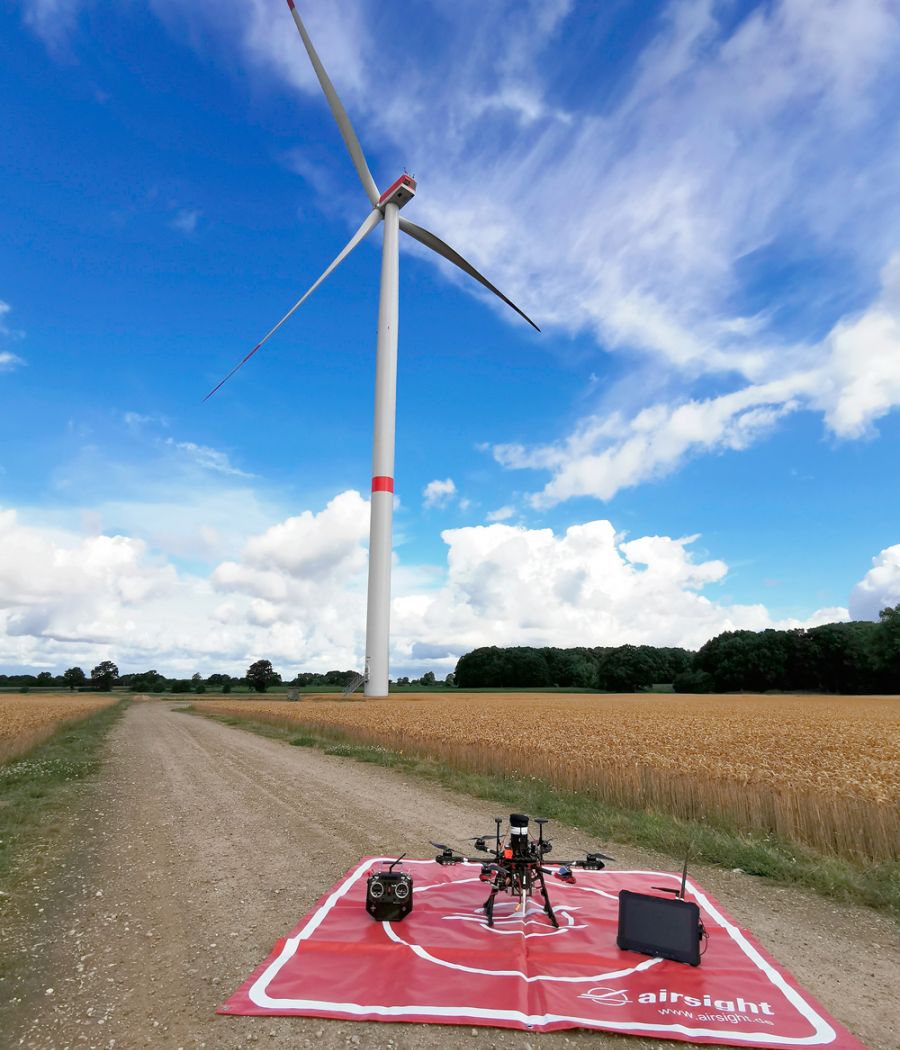
7. Sources and resources
»Identification and assessment of aviation risks arising through the introduction of aircraft detection lighting systems (ADLS) and description of measures to minimise the risks« – Study commissioned by the German Federal Ministry for Economic Affairs and Climate Action (BMWK) – https://www.bmwk.de/Redaktion/DE/Publikationen/Studien/transponderbasierte-bedarfsgesteuerte-nachtkennzeichnung.html
»General Administrative Regulation for the Identification of Airspace Obstructions« https://www.verwaltungsvorschriften-im-internet.de/bsvwvbund_24042020_LF15.htm
»Requirements for aircraft detection lighting systems (ADLS)« – https://www.verwaltungsvorschriften-im-internet.de/BMVI-LF15-20200424-KF-001-A006.htm
»ADLS conversion in theory and practice – Guideline and information for customers« – https://www.lanthan-safe-sky.com/wp-content/uploads/BNK-Umruestung_in_Theorie_und_Praxis.pdf
Being the inventors of the transponder-based aircraft detection lighting system for wind power stations, we are perfectly familiar with all the requirements and particularities of this technology. If you are an operator of wind farms,
We are looking forward to your enquiry.




